Mastering Tennis Footwork: The Basics You Need to Know
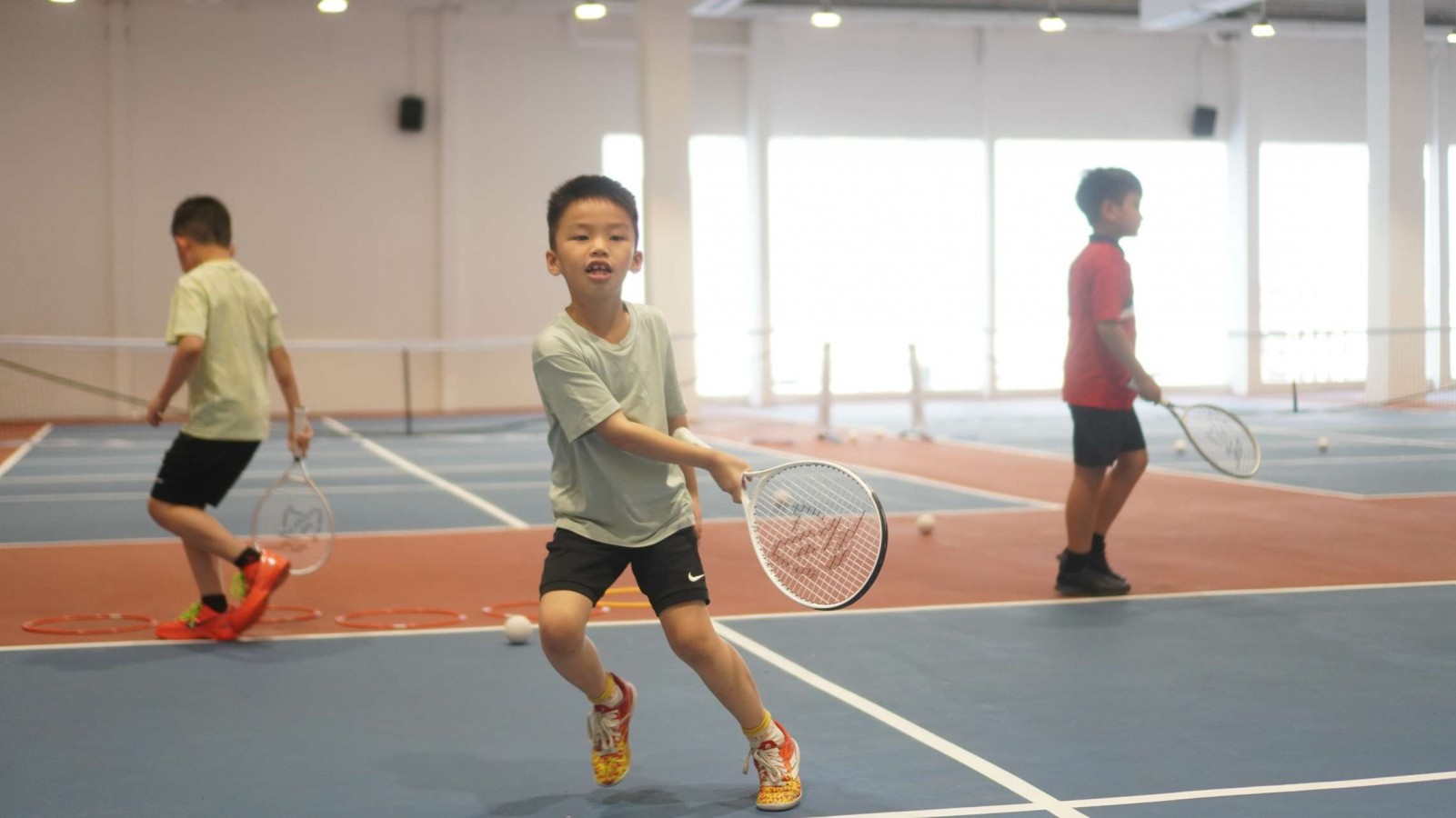
Footwork is the foundation of effective tennis play. Proper footwork not only enhances your agility and balance but also allows you to reach the ball more efficiently, execute shots with precision, and recover quickly for the next play.
In this guide, we will delve into the core components of tennis footwork, including essential drills such as the prep step, split step, first step, crossover step, and transition steps. Additionally, we will highlight the top three common footwork mistakes that can hinder your progress.
The Basics of Tennis Footwork
Tennis footwork is the art of positioning your feet efficiently to move quickly and effectively during a match. It is a vital skill that impacts your ability to reach the ball, maintain balance, and execute shots with power and accuracy. Here’s a breakdown of the core principles:
1. Ready Position
The ready position is your initial stance before making any move, essential for quick responses. Stand with your feet shoulder-width apart, knees slightly bent, and weight on the balls of your feet.
Your racket should be held in front, allowing you to react swiftly to your opponent's shots.
Without a solid ready position, your reactions are slower, balance is compromised, and your first step may be inefficient.
Pro tips:
- Keep your core engaged to stay balanced.
- Stay light on your toes, not flat-footed, to allow quick lateral or forward movements.
- Imagine being “on alert” rather than tense.
2. Split Step
The split step is a crucial technique for improving your reaction time. As your opponent prepares to hit the ball, perform a small jump with your feet slightly apart and land in a balanced position. This step helps you stay agile and ready to move in any direction.
It primes your muscles, improves reaction time, and prevents being rooted to the spot when a sudden shot is directed at you.
Pro tips:
- Time the split step just before your opponent makes contact with the ball. Too early or too late reduces effectiveness.
- Land softly on the balls of your feet to stay agile and reduce joint stress.
- Use a small, controlled jump.
3. First Step Reaction and Adjustment Steps
The first step reaction involves a quick, explosive move towards the ball after the split step. It is critical for reaching the ball efficiently.
Adjustment steps are additional small movements to fine-tune your position, ensuring you are correctly aligned to strike the ball.
These steps help you reach the ball efficiently while staying balanced, which improves shot accuracy and prevents overreaching.
Pro tips:
- Focus on short, explosive steps rather than long strides initially.
- Adjust your steps continuously instead of trying to reach the ball in a single movement.
- Keep your racket ready while moving—don’t wait until you stop to prepare for the shot.
4. Back Foot Follow Through
The back foot follow-through is vital for maintaining balance and generating power in your shots.
After hitting the ball, allow your back foot to naturally follow through, which helps you remain stable and prepare for the next move. This technique ensures fluidity and effectiveness in your shot execution.
Proper follow-through prevents you from falling off balance and sets you up for the next shot without losing momentum.
Pro tips:
- Rotate your hips and shoulders with the follow-through to maximize power.
- Keep your weight moving fluidly from your back foot to your front foot.
- Avoid stiffening your legs, which can slow recovery and reduce shot efficiency.
5. Side Step
The side step is used for lateral movement across the court. Move sideways by shifting your weight from one foot to the other, keeping your body aligned and balanced.
This step is essential for reaching balls that are hit to the side without losing your position or balance.
Tennis requires quick side-to-side movement, and improper lateral motion can result in poor positioning or injury.
Pro tips:
- Keep your knees bent and body low to stay quick.
- Avoid crossing feet unnecessarily; shuffle sideways with short steps to maintain readiness.
- Use your arms for balance and momentum.
6. Cross Step
The cross step is employed to cover ground quickly and efficiently when moving diagonally. As you move in one direction, cross one foot over the other, allowing for a smooth and swift transition. This technique is crucial for adjusting your position and maintaining momentum.
Diagonal shots often require quick, efficient coverage, and the cross step helps you reach these balls without breaking rhythm.
Pro tips:
- Use the cross step sparingly and only when needed.
- Combine with a slight forward lean to maintain speed.
- Practice footwork patterns that naturally incorporate cross steps to improve court coverage.
7. Run Step
The run step is used for covering large distances on the court, such as when retrieving a deep shot. Utilize a running motion by pushing off with both feet and maintaining a forward lean.
This step helps you reach balls that are far from your initial position and return them effectively.
Deep or wide shots are common in competitive play, and efficient running ensures you can return them without losing energy or balance.
Pro tips:
- Keep your racket in front while running to prepare for the shot.
- Stay light on your toes and don’t overstride, which can slow you down.
- Combine with adjustment steps as you approach the ball for precise positioning before hitting.
Drills to Improve Tennis Footwork
Improving tennis footwork is essential for enhancing your movement, speed, and overall performance on the court. Here are some effective drills to help you develop better footwork:
A. Prep Step
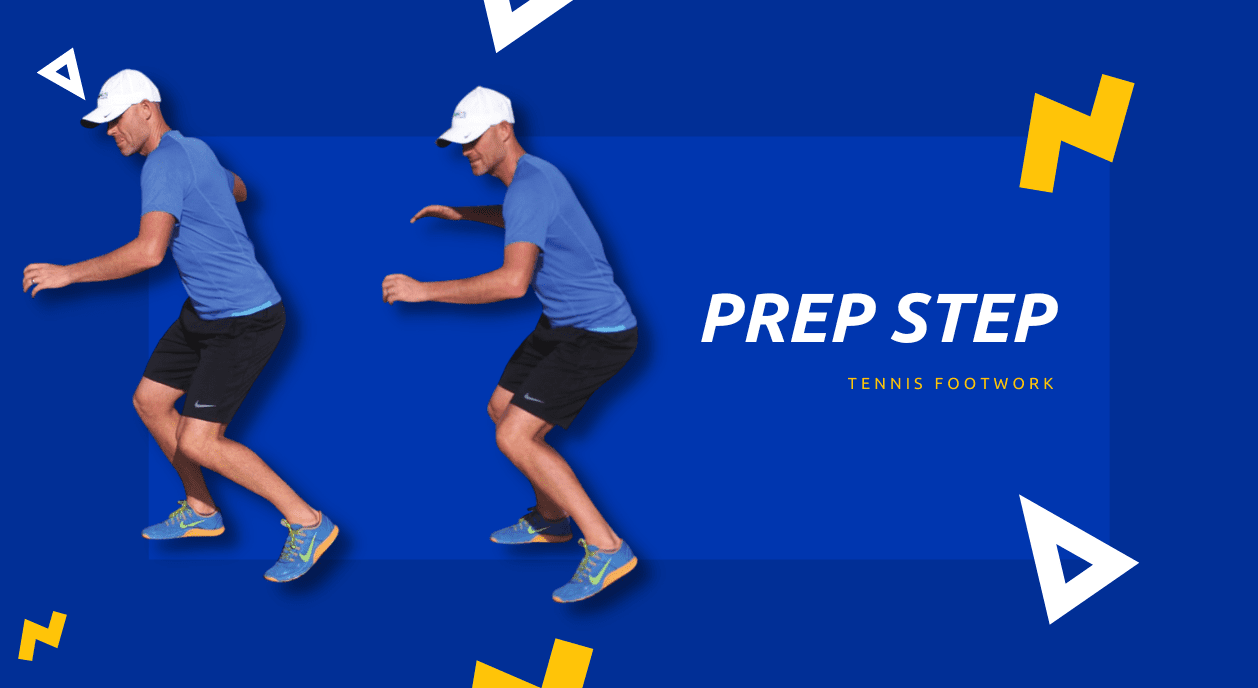
Prep steps involve small, controlled movements to adjust your position before hitting the ball. By taking quick, dynamic steps while maintaining a wide base and balanced posture, you can improve your positioning and ability to change direction efficiently.
B. Split Step
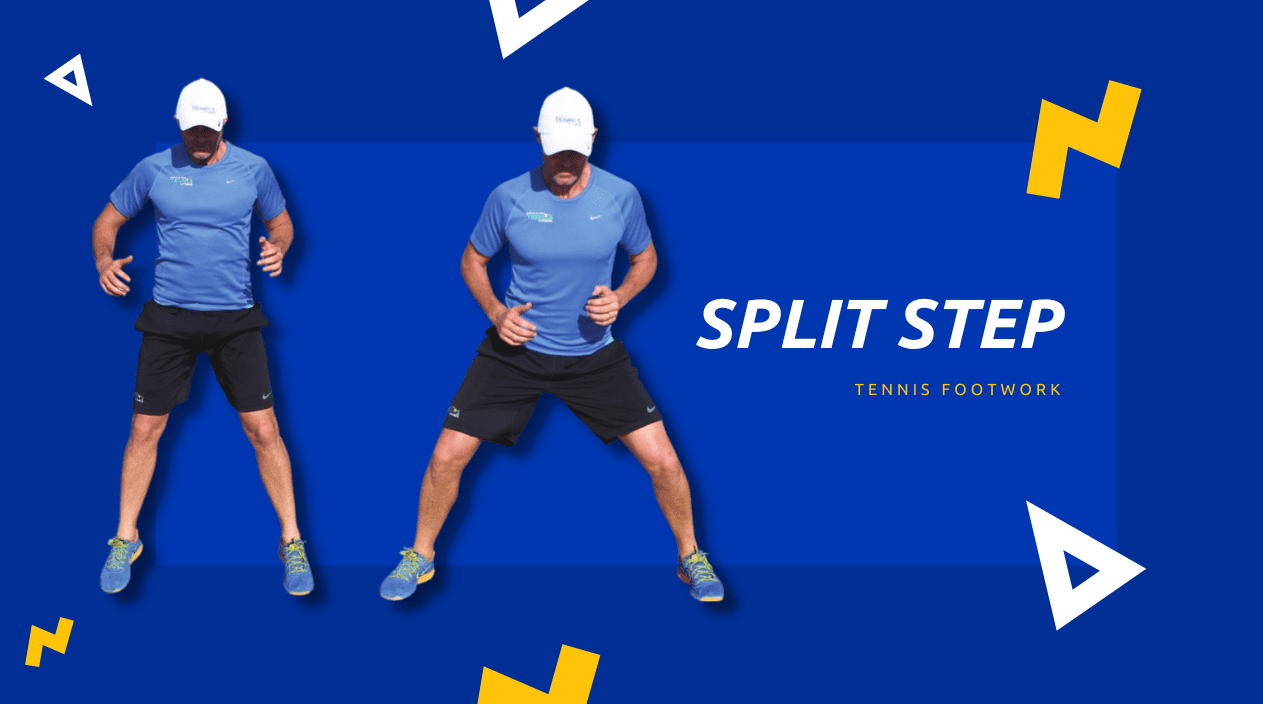
The split step is a crucial movement for preparing to react quickly. By jumping slightly off the ground and landing with your feet apart, you can generate force and prepare to move towards the ball, enhancing your reaction time and overall agility.
C. First Step
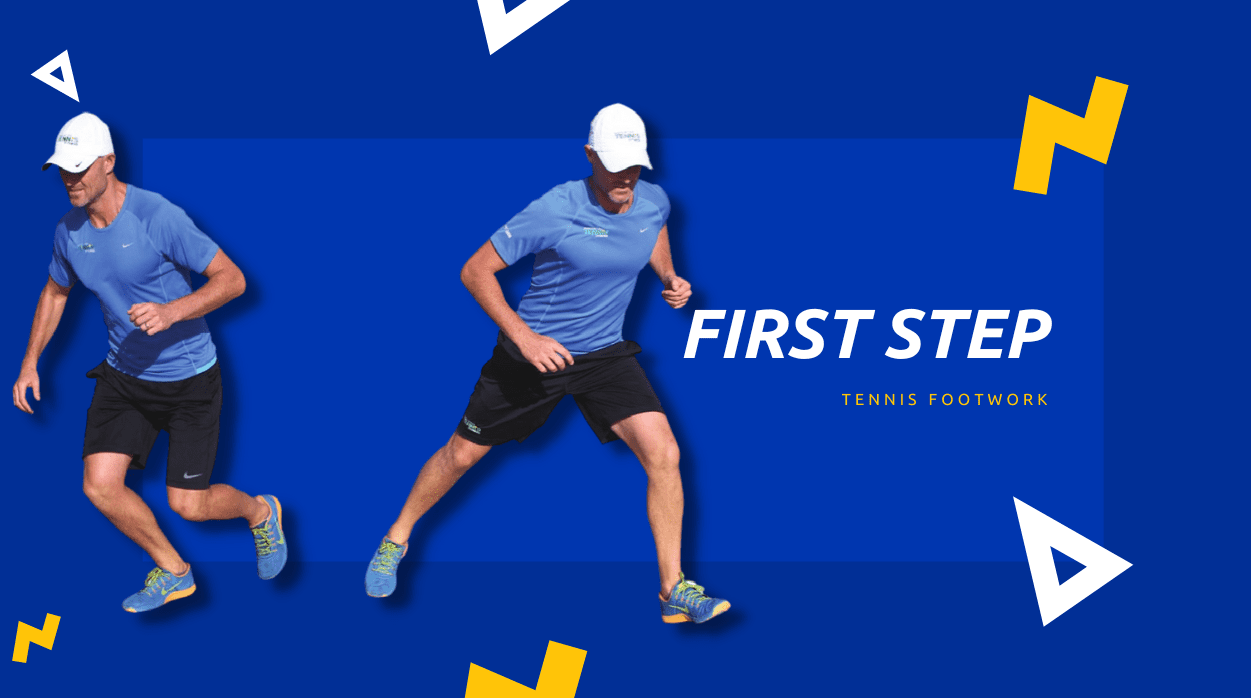
The first step is essential for dynamic court movement, as it sets the pace for your subsequent actions.
Focus on taking powerful, assertive steps with the leg closest to your direction of movement, applying force through the forefoot to maximize speed and efficiency.
D. Crossover Step
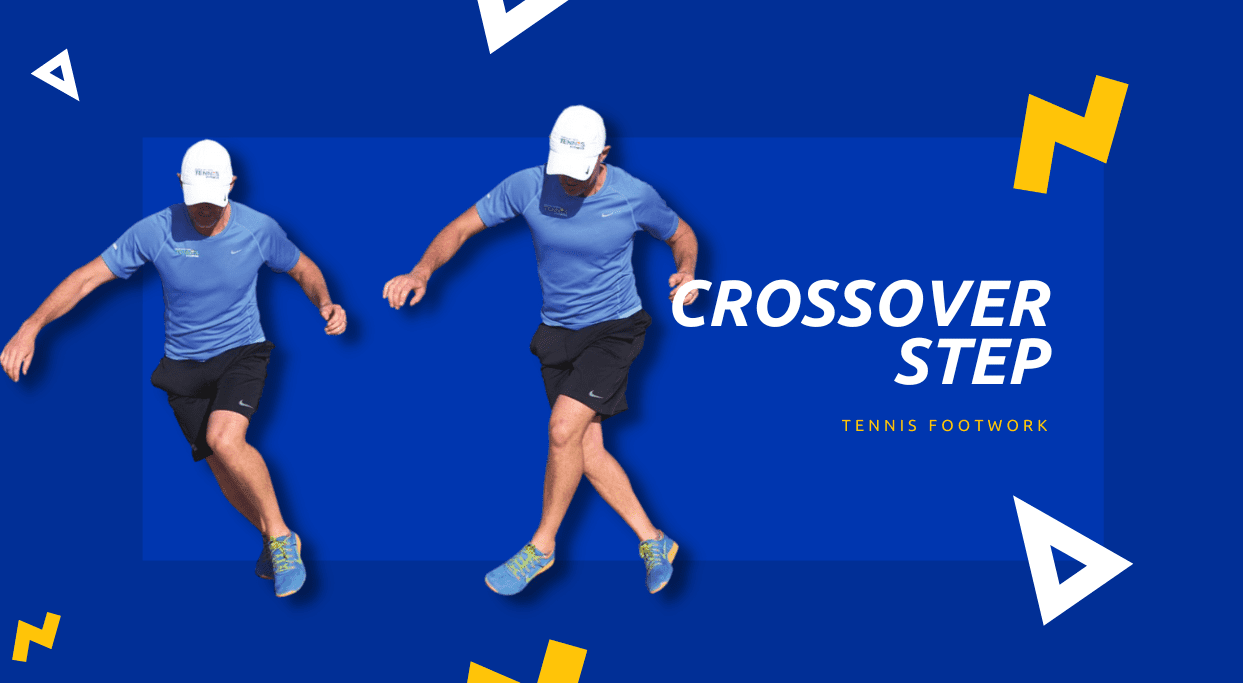
The crossover step helps with lateral movement and changing direction smoothly. By crossing your outside leg over your inside leg, you can shift into a lateral shuffle, effectively positioning yourself and applying pressure on your opponent.
E. Transition Steps
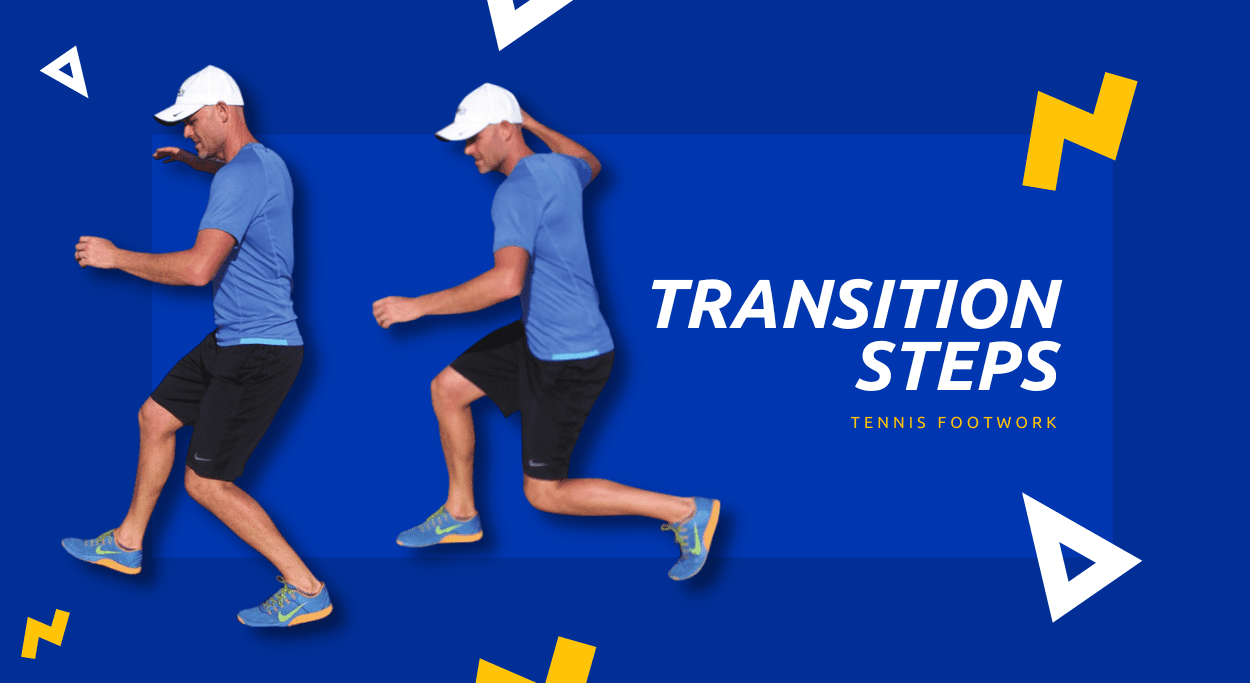
Transition steps are crucial for changing direction and adjusting your position on the court. Focus on the braking component by using small, controlled steps to decelerate and reposition, ensuring balanced posture and readiness for the next move.
F. Multi-Directional Step
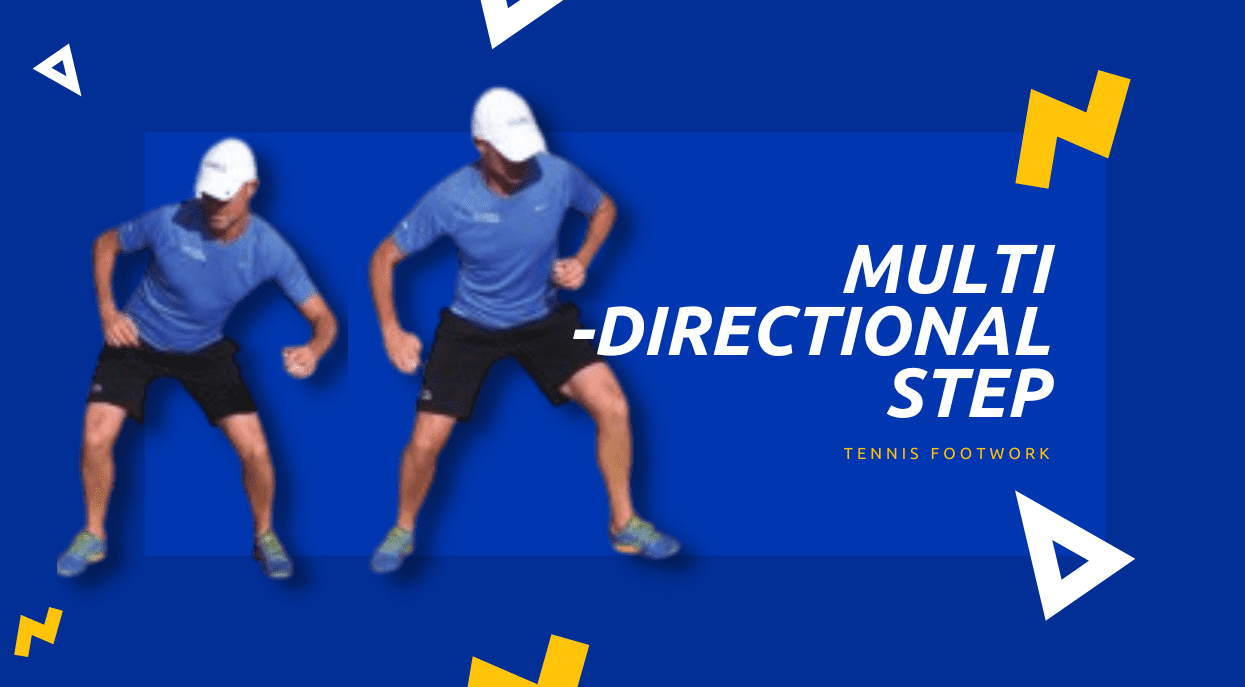
Multi-directional steps involve combining various footwork techniques to move effectively in different directions.
Practicing reactive drills, like chasing a moving ball, helps improve agility and fluid movement by emphasizing the integration of split steps, first steps, crossover steps, and transition steps.
Note: all images source from Tennis Fitness
Top 3 Common Footwork Mistakes
When it comes to tennis, having sharp footwork can make a huge difference in your game. However, even seasoned players can fall into some common footwork traps that might hold them back. Here are the top three footwork mistakes to watch out for and tips on how to fix them:
1. Open Stance Forehand Mistake
A common mistake occurs when a player prepares for an open stance forehand by taking multiple small steps instead of maintaining their position or stepping slightly to the side.
Rather than adjusting with excessive movement, the player should either stay in place, lower their body, and coil, or take a minimal side step to set up for the shot.
This approach conserves energy and improves positioning for a more effective stroke.
2. Closed Stance Adjustment Mistake
Another frequent error is taking multiple steps to adjust for a short ball when a simpler pivot would suffice. Instead of making three small steps to move just a foot or two, players should pivot on the outside foot and step forward with a single step.
This method streamlines the footwork, providing a better balance and a more efficient setup for the closed stance shot.
3. Back Foot Dragging Mistake
The third mistake involves leaving the back foot behind during a closed stance forehand or two-handed backhand. This error restricts hip rotation, resulting in a loss of power and balance.
To correct this, players should ensure their back foot moves forward in sync with their hip rotation, often by dragging the toes on the ground, which helps maintain balance and enhances stroke effectiveness.
Take Your Game to the Next Level!
Mastering tennis footwork is fundamental to excelling in the sport, whether you're a beginner or an experienced player. As you continue to develop your tennis footwork, you'll find yourself moving more efficiently and confidently, ultimately elevating your overall game.
For those seeking to elevate their tennis skills and experience top-notch training, the Tennis Program at Rockstar Academy is the perfect choice. This program offers comprehensive coaching in various styles, including the innovative touchtennis, designed to refine your techniques and enhance your performance.
As part of the prestigious Sports & Performing Arts Academy, the program prepares players for high-level competitions, including the renowned RockOlympics.
Best of all, you can experience the benefits of our program firsthand with a free trial. Don't miss out on this chance to see how Rockstar Academy can help you reach your full potential!
FAQ
What is tennis footwork?
Tennis footwork involves the movements and steps players use to position themselves efficiently on the court, ensuring optimal balance and readiness for each shot.
How to improve your footwork in tennis?
Improve your footwork by practicing specific drills, focusing on agility and speed, maintaining proper posture, and integrating techniques like the split step and crossover step into your training.



